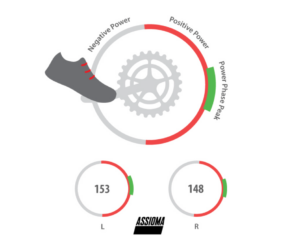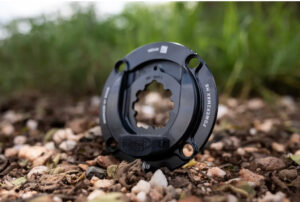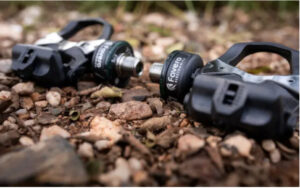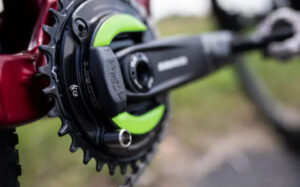10 Ways A Power Meter Will Improve Your Riding
As the price of power meters continues to tumble into the just-about-affordable range, here's how one will change your cycling life.
The ultimate in metrics comes from the power meter. It wasn’t long ago that Greg LeMond (the only American to have won the Tour de France) took his early adopter heart rate monitor training one step further in 1992, becoming one of the first pro riders to train with a power meter. Gone are the industrial training-only setups that greeted those founder members of the wattage cottage – the last decade has seen power meter prices tumble, as technical advances and battery life have made measuring your output on the bike something you can do with every pedal stroke. But why?

Power meters will never tell you how to get fitter/faster/stronger, but they will let you or your coach track and improve your training regime. And if you think it’s just for the mega-watt professionals – think again! All of us can draw benefit from the real-time accuracy that modern meters offer.
No more excuses
Know exactly the effort you’re putting out, regardless of terrain, conditions, fitness, or any other factor, with metrics that you can meaningfully compare over time to gauge progress. You can get close with a heart rate monitor, but it can only measure your body’s response to your effort; a power meter records your output. Heart rate is unpredictably affected by other factors like heat, caffeine consumption and training load, whereas power meters are not affected by any outside variables. With this accuracy your power meter data can track trends in your performance between every session, year after year—the data is comparable.
READ MORE Favero’s Excellent Assioma power pedals
Do more, in less time
By removing the guesswork from your training, power meters allow you to train time efficiently. Plan exactly what you want to do, then go out there and do it guided by the numbers on your head unit, making it easy to ensure that your training is the most effective for the time you have available. Instead of riding around aimlessly, with a power meter you spend the right amount of time in each zone.

Focus
By setting up your zones correctly, and sticking to them, your power meter allows you to accurately train at a range of efforts. New riders often ride at just one level, a middle zone that is close to hard, yet never easy, upping their duration to get fitter rather than adjusting their output. Power meters can help with a focus to each training ride, as well as ensuring you are sticking to the intended intensity as you ride. Power meters are make this polarised style of training much easier to control; you can make your hard sessions appropriately hard, and your easy sessions properly easy – most riders make the mistake of riding too hard on easy days, leaving them fatigued when they need some interval oomph.

Work your weaknesses
Using a power meter helps you identify your weaknesses. Plot your data as a power curve, and you get reliable feedback on all durations of effort, from five seconds to hours, and everything in between. This curve helps you see what type of rider you are, and if specific work needs to be done to improve a particular area of your fitness. Training strategies can then be individualised and your training time spent more effectively.
Favero’s IAV software will help you build a smooth, powerful pedal stroke.
Power is heart rate’s BFF
Power meters are most effectively used in conjunction with a heart rate monitor; it allows you to measure your fuelling and recovery strategies, while the power meter concentrates on the absolute wattage your muscles can produce. You can also use this combination to track your training and improvement; measure and compare is how much power you can produce for any given heart rate – say you ride at 150bpm and you produce 175 watts for 20 minutes. As your training plan progresses, you can compare with this value and see where you have improved. If you find you are producing 175 watts at a lower heart rate, you’re getting fitter, riding more efficiently. Producing more power at 150 heart rate? You’re getting stronger, too!
Real-time data
Power meter metrics can be useful for accurately seeing how hard you are pushing the pedals. The main problem with heart rate is that it’s not instantaneous. If you are doing an all-out effort sprinting up a hill, your heart rate doesn’t immediately go to the max. Power meters let you know if you’re hitting an intended zone immediately in training sessions that involve shorts intervals. It will also help you pacing longer efforts – 5-20 minutes – where using just heart rate often ends in disaster in the final part of the interval.
READ MORE Affordable Power For Every Cyclist
It will tell you to rest!
A power meter can warn you when it’s time for recovery. The data from a power meter can be uploaded software like Training peaks or Strava, and this will give you a number for your training load. You want gradual and a power meter can help with that and keep the dreaded overtraining at bay. Alongside a heart rate monitor, it can show you if your heart rate is higher than normal for a particular power output, which could indicate you’ve not recovered sufficiently from your last session or block and you need to take it easy.

The perfect pace partner
You can use a power meter to pace your race. This is a great bonus in time trials and MTB races, where you are essentially in charge of your own pace. You can use a power meter in bunch racing too, but this is not the place for screen time – maybe set some alarms, and look at the download later to learn where you did well, and not so. Racing is a great place to discover your real power numbers – you simply can’t motivate yourself in training to hurt nearly as much.

Crack those KOMs
Using a power meter can be a satisfying way of gauging progress and maintaining your drive as you achieve peak power PBs, but it can also be a motivational tool when it comes to cracking that local segment. And you can pre-plan your power needed for that particular target. It’s like having a little coach on your handlebars, telling you to hurry up or slow down, as necessary.

Buy your Saris H3 Smart Trainer RIGHT HERE
Power transforms the pain cave
Take your indoor training to the next level with a dedicate power meter, rather than the estimated power that many platforms use if you aren’t providing the metrics yourself. This is especially effective if you are doing multiple short fall-over-when-you-are-done intervals. You can control your numbers better in the pain cave, and it’s far safer than collapsing on the highway after the final death-effort. Most smart trainers are good enough to do this, but many top riders use dedicated power meters for ultimate accuracy.
READ MORE ON: assioma favero favero indoor trainers p2m partner content power meters power2max saris



